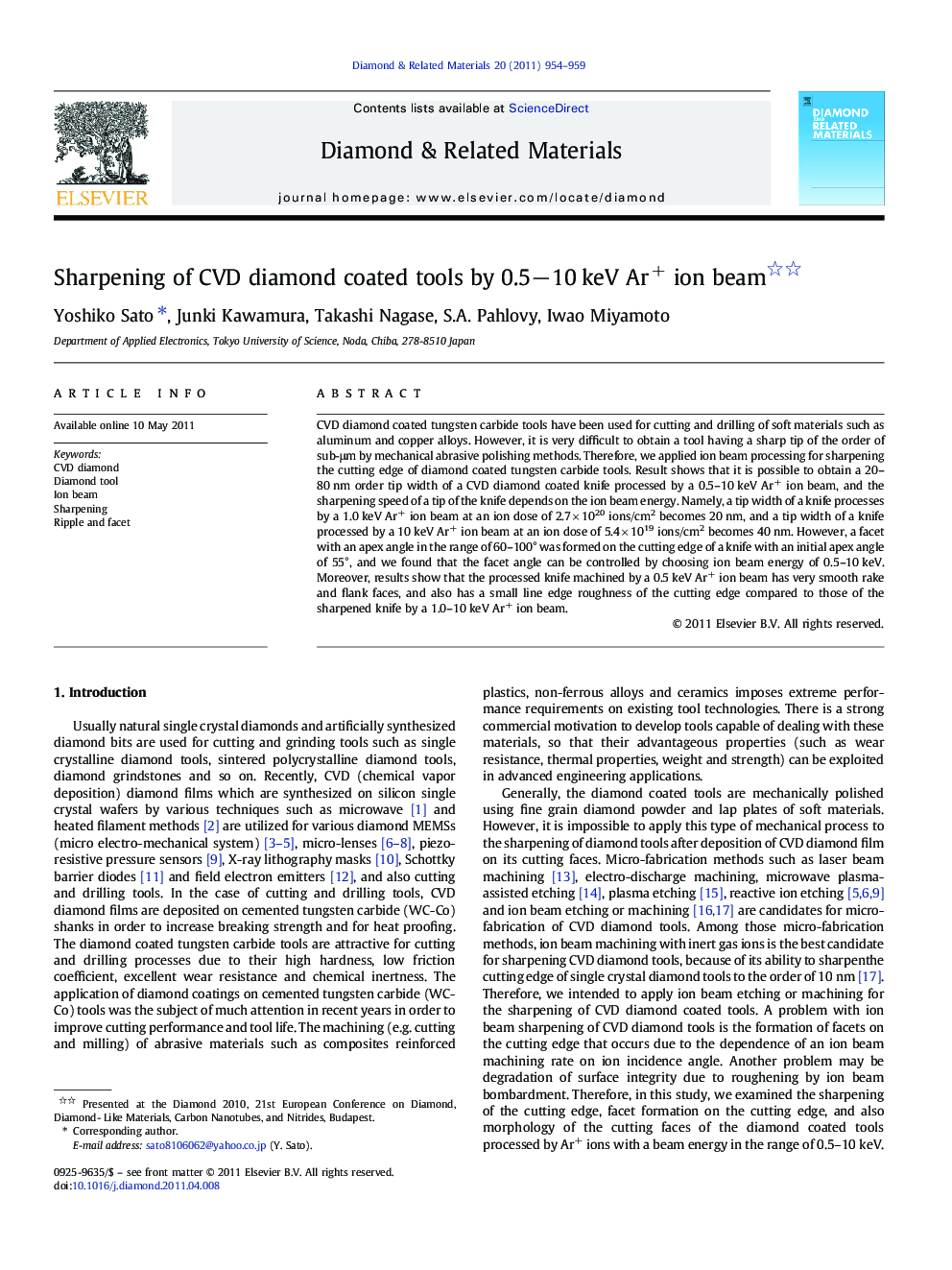| کد مقاله | کد نشریه | سال انتشار | مقاله انگلیسی | نسخه تمام متن |
|---|---|---|---|---|
| 702580 | 891103 | 2011 | 6 صفحه PDF | دانلود رایگان |

CVD diamond coated tungsten carbide tools have been used for cutting and drilling of soft materials such as aluminum and copper alloys. However, it is very difficult to obtain a tool having a sharp tip of the order of sub-μm by mechanical abrasive polishing methods. Therefore, we applied ion beam processing for sharpening the cutting edge of diamond coated tungsten carbide tools. Result shows that it is possible to obtain a 20–80 nm order tip width of a CVD diamond coated knife processed by a 0.5–10 keV Ar+ ion beam, and the sharpening speed of a tip of the knife depends on the ion beam energy. Namely, a tip width of a knife processes by a 1.0 keV Ar+ ion beam at an ion dose of 2.7 × 1020 ions/cm2 becomes 20 nm, and a tip width of a knife processed by a 10 keV Ar+ ion beam at an ion dose of 5.4 × 1019 ions/cm2 becomes 40 nm. However, a facet with an apex angle in the range of 60–100° was formed on the cutting edge of a knife with an initial apex angle of 55°, and we found that the facet angle can be controlled by choosing ion beam energy of 0.5–10 keV. Moreover, results show that the processed knife machined by a 0.5 keV Ar+ ion beam has very smooth rake and flank faces, and also has a small line edge roughness of the cutting edge compared to those of the sharpened knife by a 1.0–10 keV Ar+ ion beam.
Research highlights
► The facet angle of cutting edge of CVD diamond coated knives can be controlled by changing ion energy of Ar+ ion beam.
► With 7 to 10 keV Ar+ ion, the processed CVD diamond coated knife's apex angle is 55° to the order of 100 nm.
► Tip width of the CVD diamond coated knife processed by 0.5–10 keV Ar+ ion beam decreases with increasing ion dose.
► Sharpened CVD diamond coated knives by 0.5 keV Ar+ ion beam has very smooth rake and flank faces and small line edge roughness.
► Surface roughness Rrms of the insert-chip with fine grain decreases with increasing ion dose and becomes 20 nm rms.
Journal: Diamond and Related Materials - Volume 20, Issue 7, July 2011, Pages 954–959